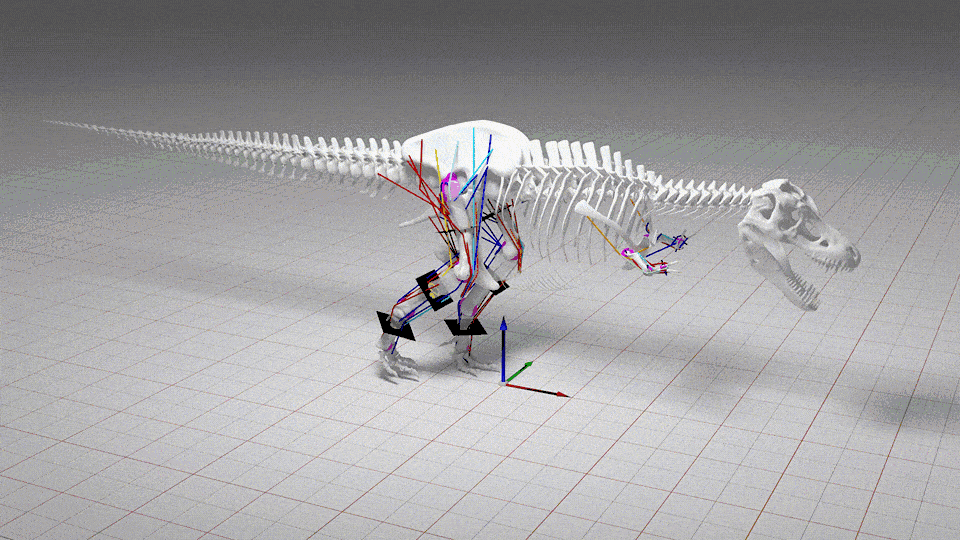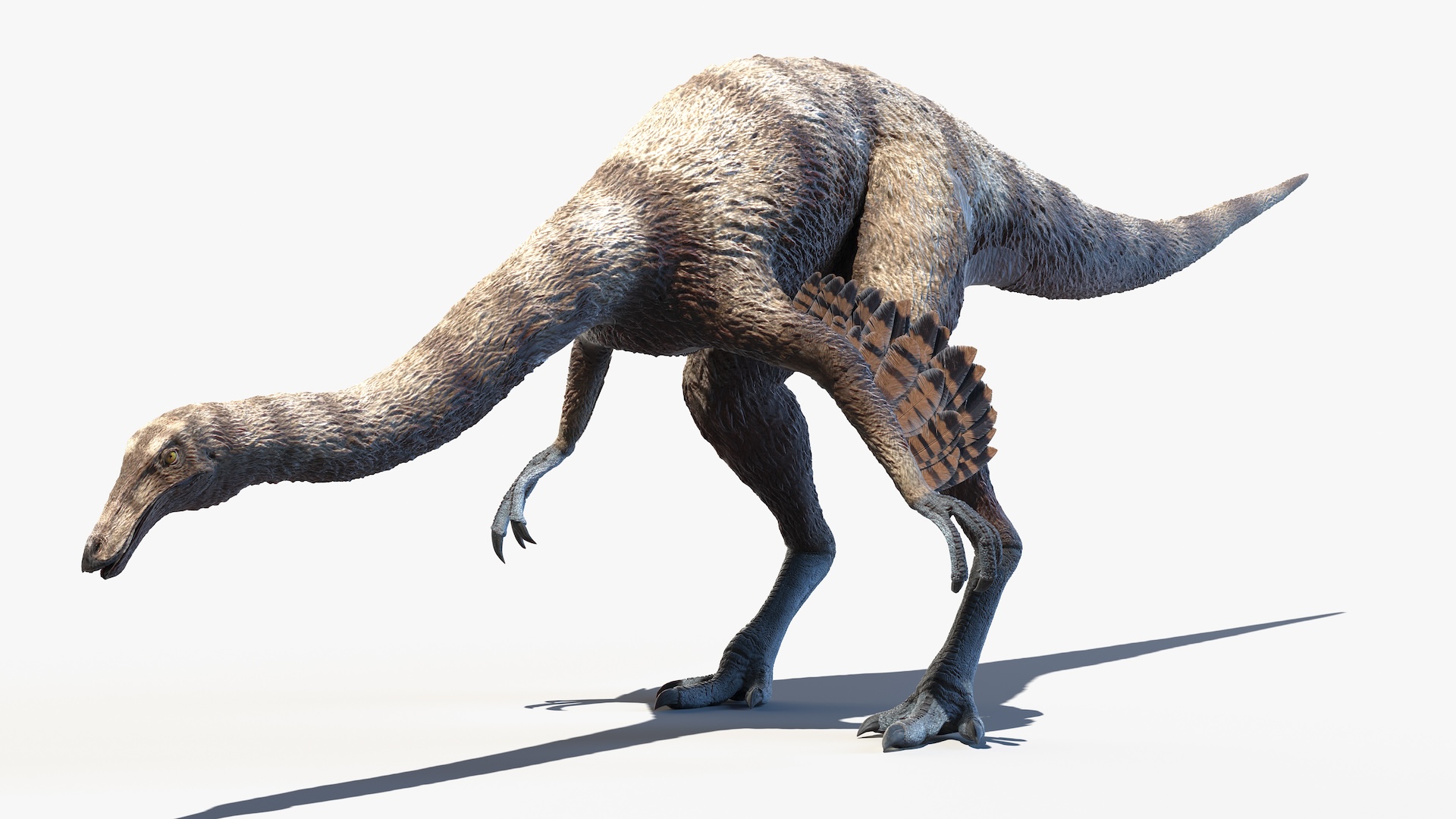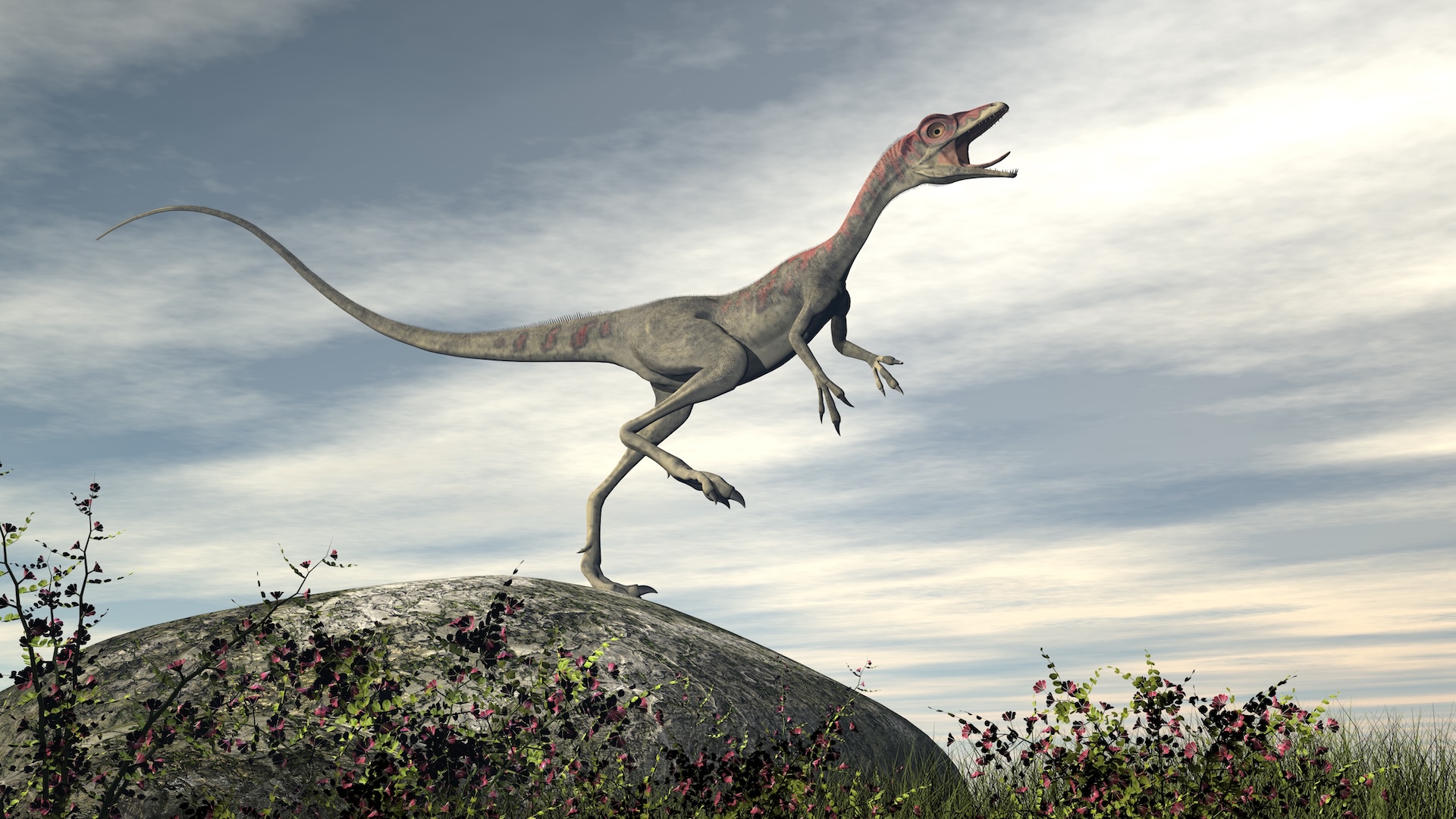What was the fastest dinosaur?
Dinosaurs left behind clues about their maximum speeds, but do we know which dinosaur was the fastest?

Before the mid-1960s, it was widely believed that all dinosaurs were cold-blooded, slow-moving animals. But in the summer of 1964, a team of paleontologists led by John Ostrom discovered Deinonychus, a dinosaur equipped with large, sickle-shaped claws; a lightweight body; and strong legs. The fossil suggested the animal was fast and agile.
The discovery showed that some dinosaurs were active and nimble. And so began the "dinosaur renaissance" — a scientific shift that redefined our understanding of dinosaurs by showing that many were faster than previously assumed.
So what was the speediest dinosaur?
"The fastest dinosaur was likely an Ornithomimosauria," Susannah Maidment, a paleontologist at the Natural History Museum in London, told Live Science. These lanky bipedal dinosaurs from the Late Cretaceous period are often described as ostrich-like, with features that suggest they were built for speed.
"Generally, if you have long, slender limbs and your muscle attachments are located near the top of those limbs, then your leg basically functions like a pendulum, which suggests that you can move relatively quickly," Maidment said.
Related: The world's fastest animals
To determine which dinosaur was the fastest, we can turn to biomechanics. In the early 1970s, zoology professor Robert McNeill Alexander pioneered the field of biomechanics by applying physics and engineering to the study of animal movement. By observing modern animals, Alexander discovered a link between leg length and stride length that could be used to estimate an animal's speed.
Sign up for the Live Science daily newsletter now
Get the world’s most fascinating discoveries delivered straight to your inbox.

"The faster an animal walks or runs," Alexander determined, "the longer in general are its strides." Caught up in the dinosaur renaissance, Alexander brought his knowledge of animal locomotion to the study of dinosaurs.
For years, researchers have measured dinosaurs' stride distances and foot size from trackways and compared them to known leg lengths of existing fossils to estimate a dinosaur's speed. However, Maidment said this method is imprecise.
In addition, we don't know if these dinosaurs were moving at their top speed when they left those tracks, noted Eugenia Gold, a paleontologist and associate professor of biology at Suffolk University in Boston. "The really good tracks we get are on softer sediments," Gold told Live Science. "But if you've ever tried to run through mud, you know that you are probably not running at your full speed."
Because trackways offer only partial and sometimes misleading snapshots of dinosaur movement, "we don't have amazingly good data on maximum speed," added William Sellers, a professor of natural science at the University of Manchester in the U.K.
So Sellers turned to evolutionary robotics and biomechanical modeling to get a more accurate picture. By simulating dinosaur movement using computer-generated skeletons and physics-based modeling systems, Sellers predicted how animals likely moved in three dimensions, allowing for more realistic estimates of maximum speed. Since soft tissue, such as muscle and tendons, doesn't fossilize, Sellers had to estimate the size and mass of the muscles. He claims his estimates are reasonable because "vertebrate muscle doesn't vary very much."
Using modern-day animals — including humans, ostriches and emus — Sellers tested and validated his computer models. Knowing the simulations matched speeds in living species allowed him to feel confident the model would give realistic results for nonavian dinosaurs.

Of the five dinosaurs Sellers modeled — Allosaurus, Compsognathus, Dilophosaurus, Tyrannosaurus rex and Velociraptor — Compsognathus was the fastest, clocking in at about 39.8 mph (64.1 km/h), with Velociraptor coming in second, at about 24.1 mph (38.9 km/h). All five of those dinosaurs are theropods — a group of primarily meat-eating dinosaurs that walked on two legs and ranged from small to very large.
"I think they would have had to be very fast because they are very much built that way, and they are meat eaters, and the meat they're going to catch isn't going to be hanging around," Sellers told Live Science. "I'm guessing these small ones were fast moving also because the biggest threat to being a small theropod is probably a big theropod, because you are, after all, tasty."
Compsognathus proved to be the fastest of the dinosaurs Sellers modeled, but he modeled only a small number of dinosaurs. Despite what many people might expect, he found the T. rex was the slowest in the group at 17.9 mph (28.8 km/h). The T. rex was too big to run; its mass would have put enormous strain on its bones, causing them to break. However, other research suggests that T. rex ran at speeds between 10 to 25 mph (16 to 40 km/h).
Like Maidment and Gold, Sellers believes more generally that the fastest was still some type of theropod, but the only way to determine the quickest one would be to model all of them.
Moreover, making the models is highly time-consuming. "You need to reconstruct it in a life-like pose, and then you need to put all the bits that are preserved on," Sellers explained. "And the thing that really takes a lot of time is putting the muscles on. And so it takes six months to a year to actually create one of these things."
In the meantime, Gold offered what's really the true answer to this question, considering birds are living dinosaurs.
"If you want a really straightforward, simple answer, the peregrine falcon is the fastest dinosaur," Gold said. "It dives down through the air. And its fastest speed is 200 mph [322 km/h], and that's faster than anything can fly or run on or swim on the planet."
Editor's note: This story was updated at 10:513 a.m. on April 28 to update Eugenia Gold's title. She is now an associate professor, not an assistant professor, of biology at Suffolk University in Boston.

Roberta McLain is a science writer and science teacher based north of Boston, Massachusetts. She received her master's degree in science writing from Johns Hopkins, a master's degree in biology from the University of New Hampshire, and a bachelor’s degree in biology and psychology from Union College, Schenectady, New York. Her work has also appeared in publications such as Scientific American, The Science Writer, Science News Explores and The Pittsburgh Post Gazette. She is driven to make science understandable to people of all ages.
You must confirm your public display name before commenting
Please logout and then login again, you will then be prompted to enter your display name.

